Answered step by step
Verified Expert Solution
Question
1 Approved Answer
The expected rate of change in the nominal dollar/euro exchange rate is best described as A) the expected rate of change in the real
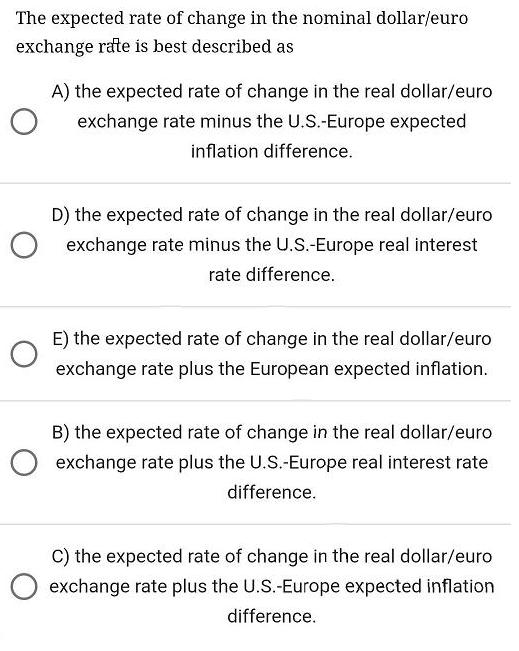

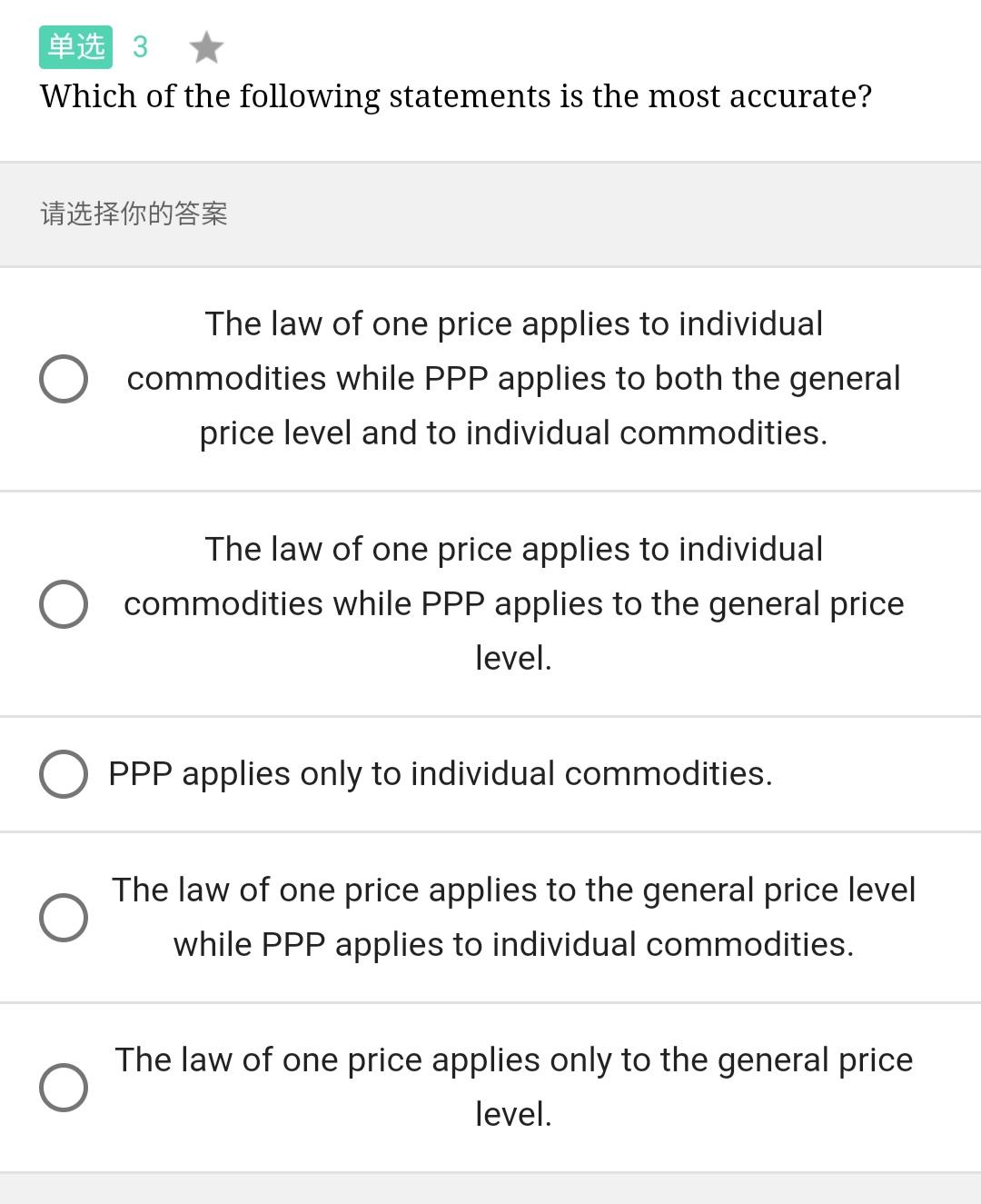

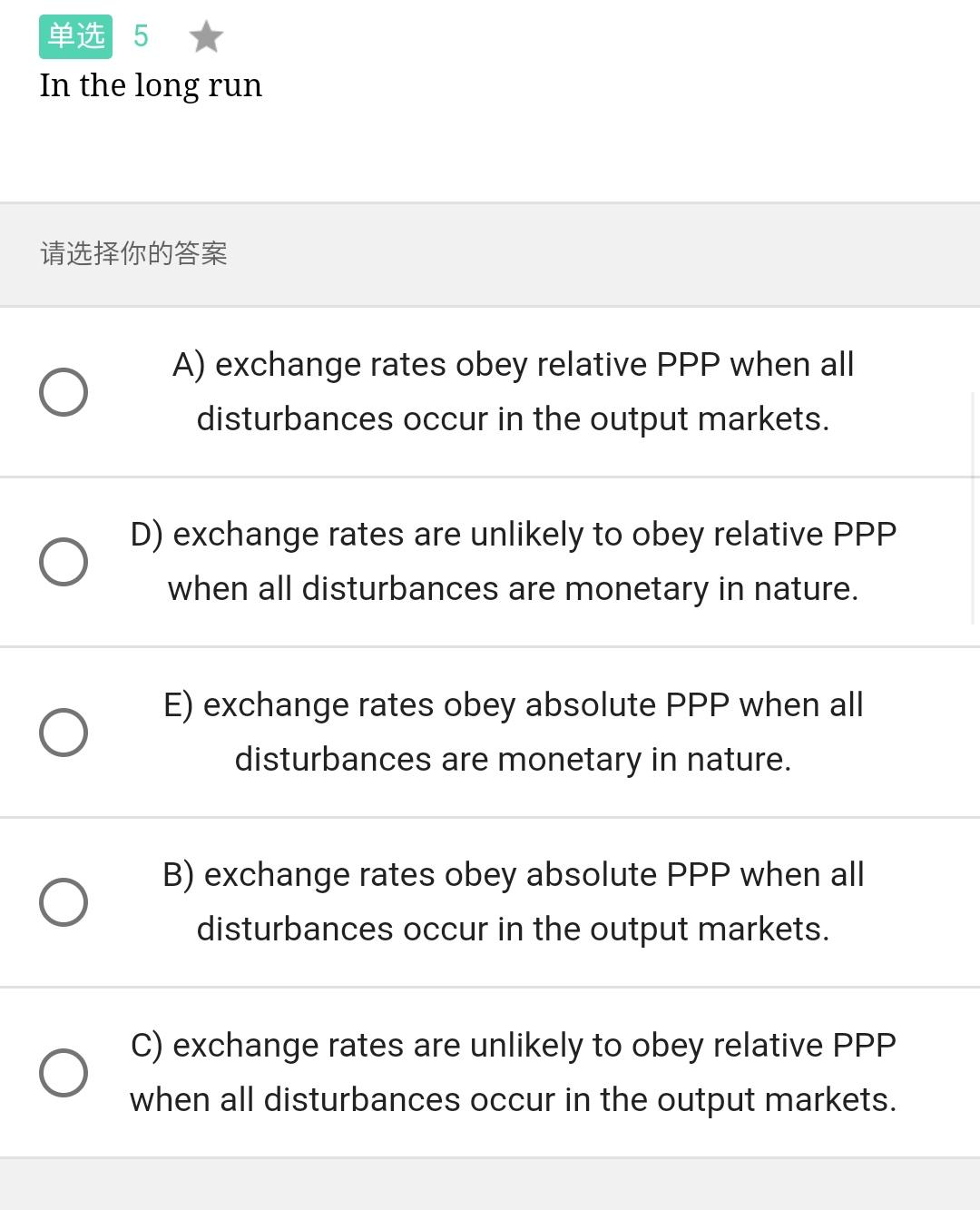
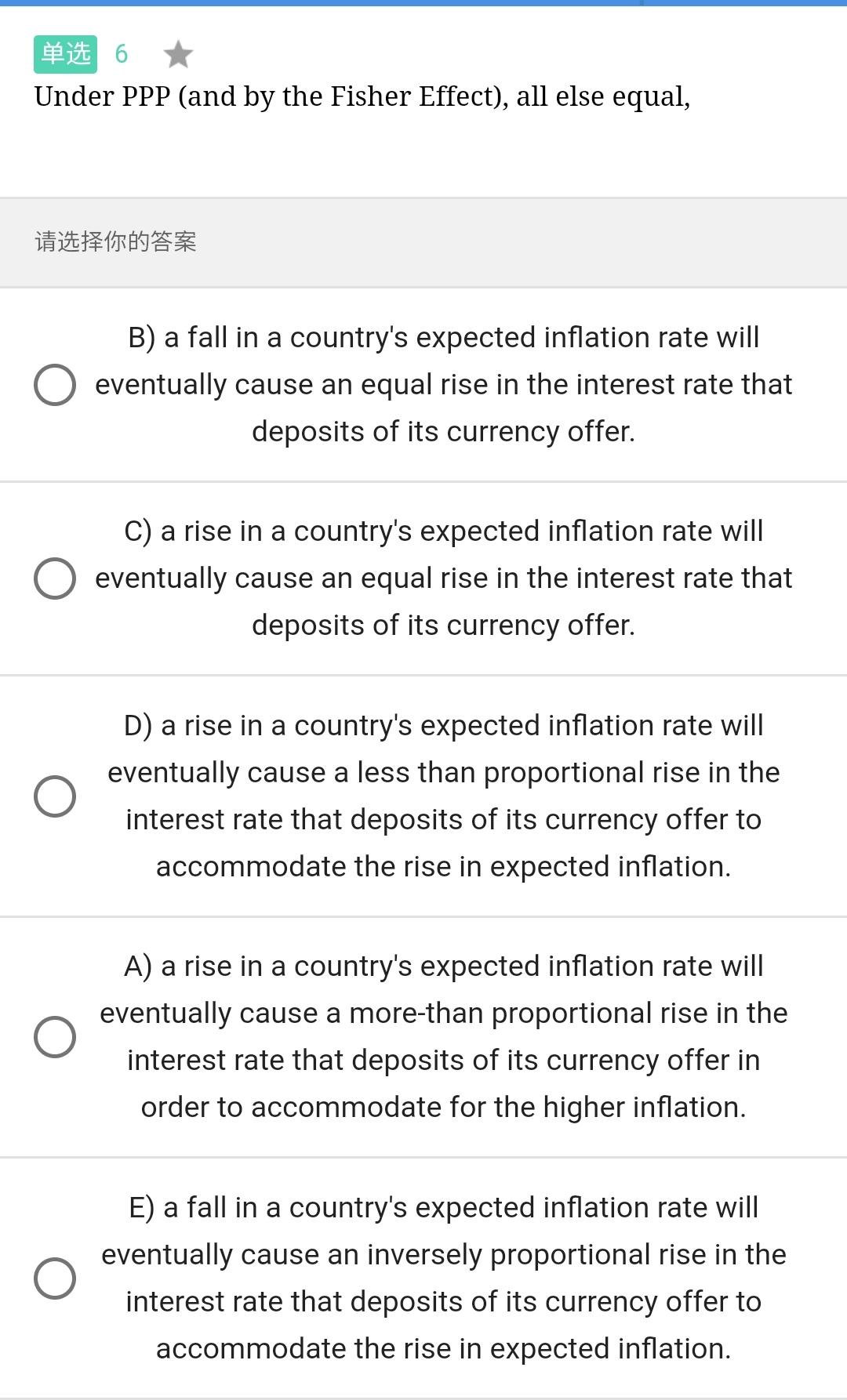

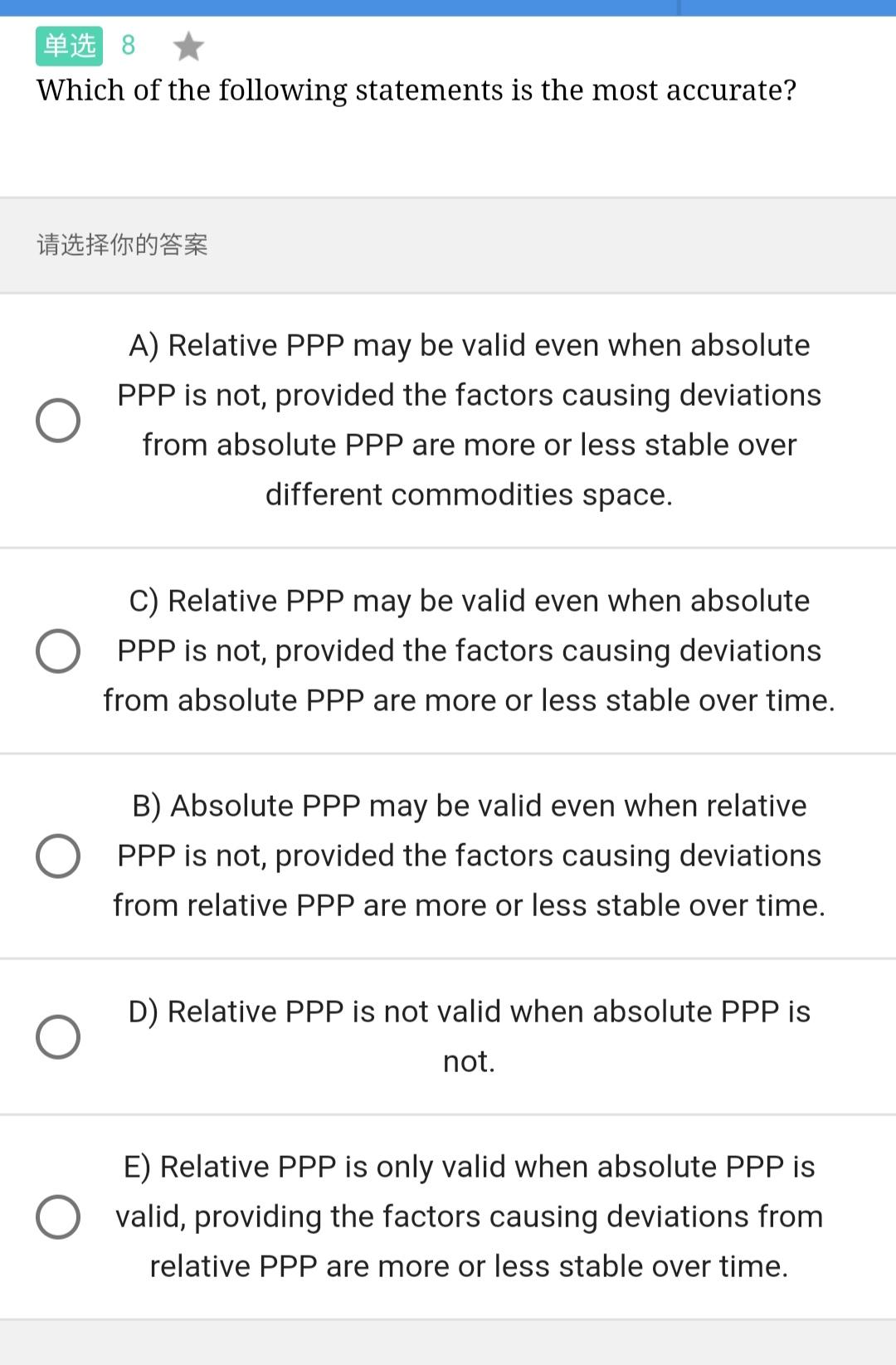
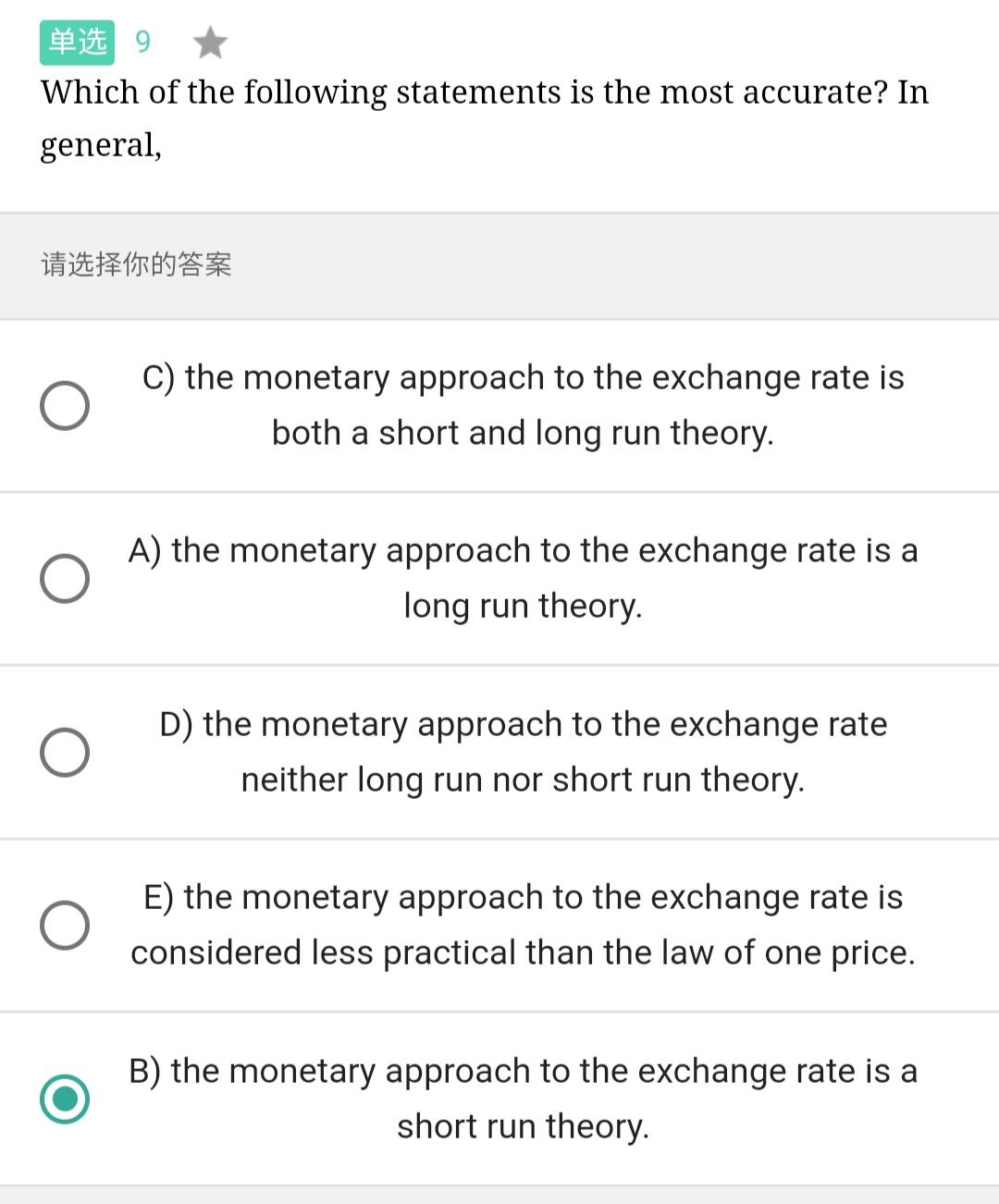
The expected rate of change in the nominal dollar/euro exchange rate is best described as A) the expected rate of change in the real dollar/euro exchange rate minus the U.S.-Europe expected inflation difference. D) the expected rate of change in the real dollar/euro exchange rate minus the U.S.-Europe real interest rate difference. E) the expected rate of change in the real dollar/euro exchange rate plus the European expected inflation. B) the expected rate of change in the real dollar/euro exchange rate plus the U.S.-Europe real interest rate difference. C) the expected rate of change in the real dollar/euro exchange rate plus the U.S.-Europe expected inflation difference. 2 The PPP theory fails in reality because D) A, B, and C. E) inflation rates are unrelated to money supply growth. C) the inflation data reported in different countries are based on different commodity baskets. O A) transport costs and restrictions on trade. B) monopolistic or oligopolistic practices in goods markets. 3 Which of the following statements is the most accurate? The law of one price applies to individual commodities while PPP applies to both the general price level and to individual commodities. The law of one price applies to individual commodities while PPP applies to the general price level. PPP applies only to individual commodities. The law of one price applies to the general price level while PPP applies to individual commodities. The law of one price applies only to the general price level. 4 An increase in the world relative demand for U.S. output causes A) a short-run real depreciation of the dollar against the euro. E) a long-run real appreciation of the euro against the dollar. D) a short-run real appreciation of the euro against the dollar. C) a long-run real depreciation of the dollar against the euro. B) a long-run real appreciation of the dollar against the euro. 5 In the long run A) exchange rates obey relative PPP when all disturbances occur in the output markets. D) exchange rates are unlikely to obey relative PPP when all disturbances are monetary in nature. E) exchange rates obey absolute PPP when all disturbances are monetary in nature. B) exchange rates obey absolute PPP when all disturbances occur in the output markets. C) exchange rates are unlikely to obey relative PPP when all disturbances occur in the output markets. 6 Under PPP (and by the Fisher Effect), all else equal, B) a fall in a country's expected inflation rate will eventually cause an equal rise in the interest rate that deposits of its currency offer. C) a rise in a country's expected inflation rate will eventually cause an equal rise in the interest rate that deposits of its currency offer. D) a rise in a country's expected inflation rate will eventually cause a less than proportional rise in the interest rate that deposits of its currency offer to accommodate the rise in expected inflation. A) a rise in a country's expected inflation rate will eventually cause a more-than proportional rise in the interest rate that deposits of its currency offer in order to accommodate for the higher inflation. E) a fall in a country's expected inflation rate will eventually cause an inversely proportional rise in the interest rate that deposits of its currency offer to accommodate the rise in expected inflation. 7 When the domestic money prices of goods are held constant E) a nominal dollar depreciation makes U.S. goods cheaper compared with foreign goods and a nominal dollar appreciation makes U.S. goods more expensive compared with foreign goods. B) a nominal dollar depreciation makes U.S. goods less appealing in foreign markets. A) a nominal dollar appreciation makes U.S. goods cheaper compared with foreign goods. D) a nominal dollar depreciation makes U.S. goods more expensive compared with foreign goods. C) a nominal dollar appreciation does not affect the prices of U.S. goods. 8 Which of the following statements is the most accurate? A) Relative PPP may be valid even when absolute PPP is not, provided the factors causing deviations from absolute PPP are more or less stable over different commodities space. C) Relative PPP may be valid even when absolute PPP is not, provided the factors causing deviations from absolute PPP are more or less stable over time. B) Absolute PPP may be valid even when relative PPP is not, provided the factors causing deviations from relative PPP are more or less stable over time. D) Relative PPP is not valid when absolute PPP is not. E) Relative PPP is only valid when absolute PPP is valid, providing the factors causing deviations from relative PPP are more or less stable over time. 9 Which of the following statements is the most accurate? In general, C) the monetary approach to the exchange rate is both a short and long run theory. A) the monetary approach to the exchange rate is a long run theory. D) the monetary approach to the exchange rate neither long run nor short run theory. E) the monetary approach to the exchange rate is considered less practical than the law of one price. B) the monetary approach to the exchange rate is a short run theory.
Step by Step Solution
★★★★★
3.45 Rating (152 Votes )
There are 3 Steps involved in it
Step: 1
1 Choice C The expected rate of change in the real dollareuro exchange rate plus the USEurope expect...
Get Instant Access to Expert-Tailored Solutions
See step-by-step solutions with expert insights and AI powered tools for academic success
Step: 2

Step: 3

Ace Your Homework with AI
Get the answers you need in no time with our AI-driven, step-by-step assistance
Get Started


